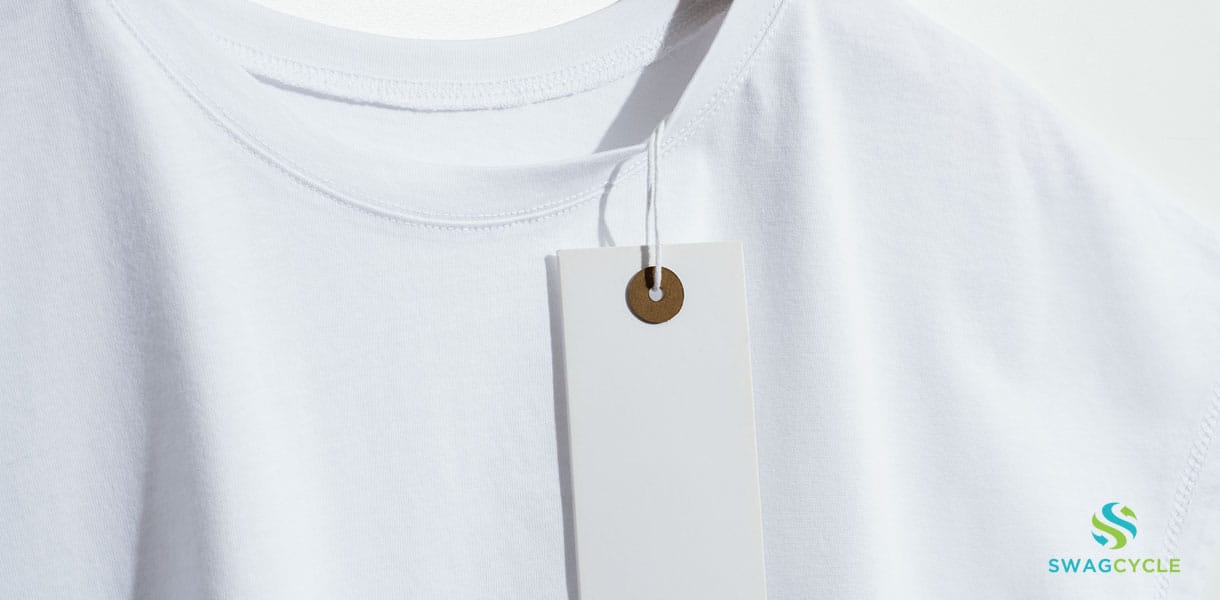The Life Cycle of a T-shirt begins with the fact that globally, we buy about two billion t-shirts every year, making it one of the most common garments in the world. However, we rarely stop to think about how the average t-shirt is produced and what its environmental impact is.
Follow along with us as we trace the life cycle of a t-shirt from obtaining raw materials through disposal, and share tips for minimizing the environmental and social footprint of your wardrobe.
Materials
Most t-shirts are made from cotton or synthetic fibers. A typical lifestyle of a cotton t-shirt begins on a farm in America, China, or India. Growing cotton requires a huge amount of water. 2,700 liters are used to produce the average t-shirt (or enough water to fill 30 bathtubs). Cotton also uses more insecticides and pesticides than any other crop in the world, and these chemicals can be harmful to ecosystems and human health. With 22.7 million metric tons of cotton produced worldwide each year, these impacts really add up.
Processing & Production
Once the cotton leaves the farm, textile mills ship it to a processing facility, usually in China or India, where machines spin the cotton into yarn and then weave it into the fabric. A single t-shirt contains about six miles of yarn. The fabric is dipped into commercial bleaches and dyes which provide the vivid coloring seen in most textiles. Unfortunately, some of these substances contain harmful compounds and chemicals that can negatively impact human health and the environment when released as waste into rivers and oceans.
The finished fabric then travels to factories, often in China, Bangladesh, India, or Turkey, where human labor is used to stitch the fabric into t-shirts—intricate work that machines can’t do.
Packaging & Shipping
Once manufacturing is complete, most t-shirts are individually wrapped in plastic, cardboard, or paper, and then adorned with tags and packaged in boxes for shipping. The packaged shirts are loaded into a shipping container and then travel by ship, train, and truck to destinations all over the world for retail sale. The entire process is incredibly carbon intensive, and apparel production accounts for a whopping 10% of global carbon emissions.
Use
When the product reaches the retail store to be sold, the packaging in the t-shirt that was shipped is usually discarded. After a consumer purchases the shirt from the store and brings it home, it enters its next resource-intensive phase. The average household does nearly 400 loads of laundry per year, using about 40 gallons of water and consuming energy to wash each load.
Since 2000, clothing sales have more than doubled while the number of times an item is worn has decreased by 36 percent, according to a 2017 report from the Ellen MacArthur Foundation. A shirt’s environmental footprint per use is dependent on how many times we wear it, so the more use we get out of an item, the smaller the footprint per wear and the better for people and the planet. One of the most impactful steps we can take to improve the sustainability of our wardrobe is to purchase fewer pieces of clothing, to begin with, and to make sure those items are high quality and long-lasting so that they need to be replaced less frequently.
Disposal
After the t-shirt has been used, it might be thrown away as trash or put to a new use through recycling, donation, or upcycling.
In the United States, about 85% of our clothing and textiles are disposed of as trash and end up in landfills or incinerators, while only 15% are donated or recycled. In the past 20 years, the amount of unwanted clothing Americans throw away each year has doubled from 7 million to 14 million tons, or 80 pounds per person.
By keeping our used clothing out of landfill, we can limit the negative impacts of what we wear, help provide affordable clothing to those in need, and support companies and organizations that are offering sustainable solutions and building a more circular economy. Learn how to keep your clothing out of the landfill with our tips for what to do with clothing and other textiles you no longer need.
Sources:
https://ed.ted.com/lessons/the-life-cycle-of-a-t-shirt-angel-chang
https://apps.npr.org/tshirt/#/title
https://www.smartasn.org/SMARTASN/assets/File/resources/SMART_PressKitOnline.pdf
https://www.newsweek.com/2016/09/09/old-clothes-fashion-waste-crisis-494824.html


